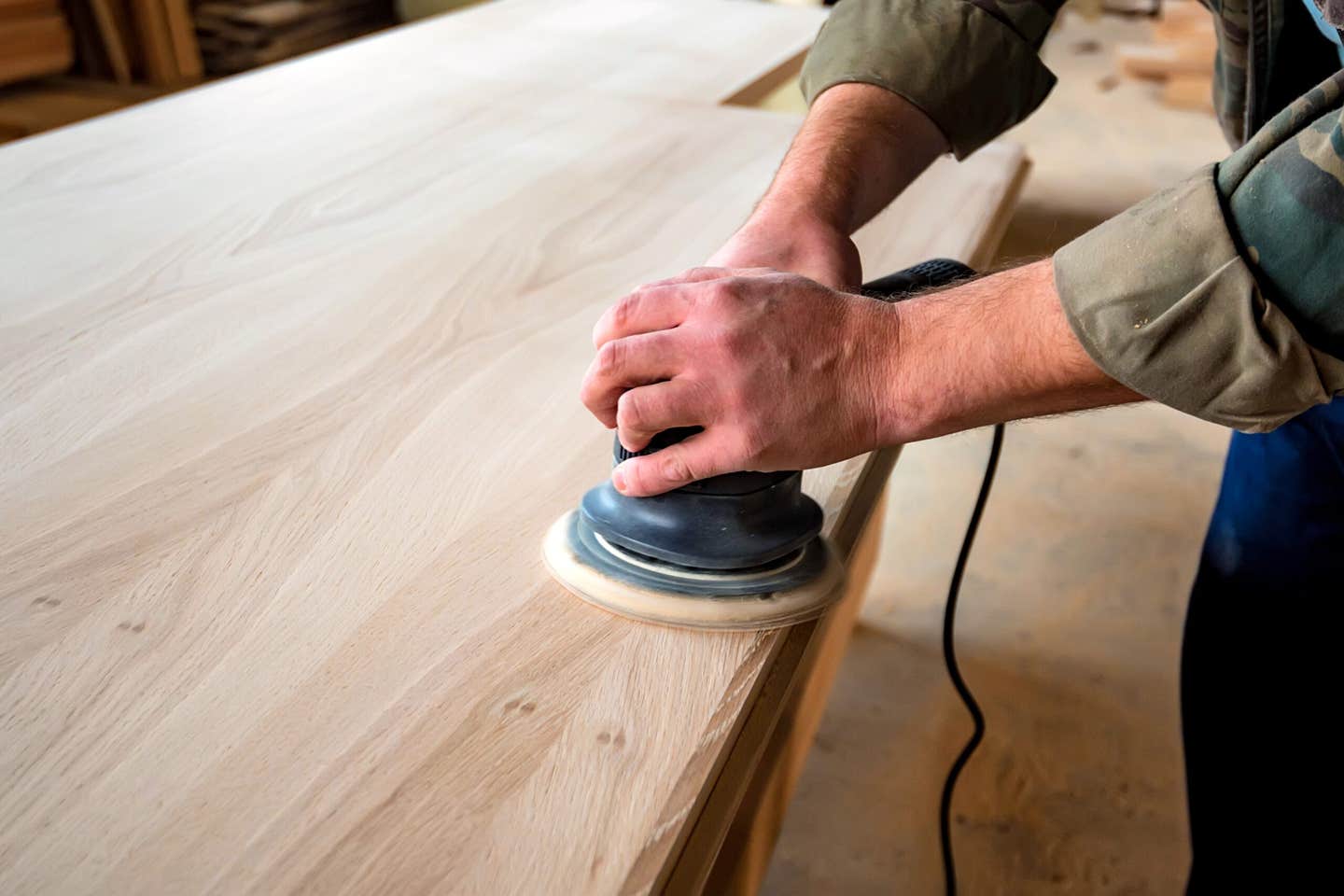Cut the cord
About half of all cordless power tools on Earth have been purchased in either North America or Europe (26 and 24 percent, respectively). So it’s no surprise that these two…
About half of all cordless power tools on Earth have been purchased in either North America or Europe (26 and 24 percent, respectively). So it’s no surprise that these two markets are at the forefront when it comes to changes in battery technology.
On the last day of 2016, a new law will go into effect in the European Union that bans cadmium in portable batteries for cordless power tools. After that date, nickel-cadmium batteries will only be allowed in emergency systems and lighting, and in some medical equipment. Lithium-ion batteries will essentially be the only viable option.
According to the U.S. Occupational Safety & Health Administration, “cadmium and its compounds are highly toxic and exposure to this metal is known to cause cancer and targets the body’s cardiovascular, renal, gastrointestinal, neurological, reproductive and respiratory systems.” The agency also notes that most of the cadmium produced today is obtained from zinc byproducts and recovered from spent nickel-cadmium batteries. Actual production from ore has declined substantially in the last few years. But cadmium is not going away entirely. Here, in North America, it is seen as crucial to the development of solar-based photovoltaic power.
The newer kids on the block, lithium-ion batteries, can contain any one of a number of chemical concoctions and each offers a trade-off between performance and stability/safety. In a lithium-ion battery, lithium ions move from a negative electrode to a positive one during use and go back to the negative side when plugged in for charging. Phones and tablets usually use power sources that contain lithium cobalt oxide, which is very efficient but has some possible safety risks if the battery is ever damaged. Woodshop power tools generally use a slightly less efficient, but also more stable and long-lasting, version. It is built on lithium ions working with phosphate, manganese or the complex compound nickel manganese cobalt oxide.
While most cordless tools still don’t offer the same torque and endurance of corded models, they are getting awfully close. One reason for that is a huge evolution in brushless motor technology that has reduced both resistance and power loss. Lithium-ion batteries themselves have also made huge strides, both in retention (how long they last between charges), their useful lifespan and their power management. Many of the tools we already use have something akin to microcomputers on board that actually manage power for us. When you’re driving a long screw into hardwoods, they sense this and open the gates to allow a surge through. And when you require several small, low-torque power draws, the sensors conserve power and allow just a trickle through, instead of running full-bore all the time. Brushless motors play into this scenario: in a tool so equipped, the motor adjusts to the demands being made upon it. The larger the resistance (that is, the more work it is being asked to do), the more power the motors draws. An “old-fashioned” motor with brushes only operates at one speed — maximum.
Unfortunately, brushless motors cost a lot more than ones with brushes and also demand larger batteries (18- and 20-volt are common so far). Both of those factors mean that there will probably be a steeper divergence during the next few years between the prices of professional verses hobbyist/homeowner cordless tools. You’ll get what you pay for and both market segments will gain. Pros will get the kind of performance they need to stay productive and competitive all day long and amateurs will hardly notice the difference in performance if they only occasionally use a tool.
So both battery advances and motor technology have allowed manufacturers to produce tools that each year can grow lighter, more powerful and more portable. Now those companies are adding two impressive innovations to power tools: charging without plugging in and wireless connections to apps on our phones.
Wireless charging
You’ve probably seen charging pads for cellphones, where a person simply places the device on or even near a power source and it “magically” charges. Doug Mockett & Co. offers a round pad/grommet that fits into a 3-5/32” hole in a kitchen countertop or office desktop and sits nearly flush with the surface. The client can just place a phone or other device on the pad and it will start charging automatically. There’s no need to remove a battery or find a wall outlet. (The mobile device does need to be equipped with a Qi-compatible case or a wireless charging receiver.) The technology is called inductive charging. What’s happening is that the charger is creating a magnetic field and the battery has a built-in receiver that taps into the energy, trapping and storing it for later use.
That technology is now available for power tools. The days of fighting other subs on an install for outlets to charge cordless tools might be numbered. For example, Bosch introduced a wireless charging system and an 18-volt battery in late 2014 and a lot of woodshops have greeted it enthusiastically in the last year. The battery actually stays in the tool, so you just place it on the charger, on the workbench, and it tops up when it’s idle between tasks.
More compact size and lighter weight in cordless tools definitely appeal to installers who occasionally have to work above shoulder height and also to casework assemblers who are lifting the tools all day long. And a lot of the new cordless tools are being built to be water-resistant, such as Panasonic’s new EY74A2 drill/driver: check the labels before you buy. Having a drill or saw still work after a night in the rain is an amazing feat.
It’s becoming a lot easier to keep track of your power reserves, too. Several leading manufacturers’ power sources now include integrated fuel gauges, a novel idea that is catching on fast with woodworkers. Instead of waiting for torque to diminish and let you know the battery is on its last legs, a quick glance at the gauge can reveal exactly how much juice is left in the cells.
Calling all tools
The other big advance in power tool battery technology is Bluetooth capability. Several leading manufacturers are now offering batteries that work with phone apps to do interesting things. For example, DeWalt has an app for both iPhones and Androids that lets a woodworker turn all of the shop’s compatible batteries on or off in case small kids or unauthorized users (thieving neighbors) gain access to the workbench. It also lets a woodworker check the charge level in each battery and beeps an alert when the battery is full or even if it’s getting too hot. And there’s a built-in timer that can be set to let an employee use the tool for a set amount of time before the battery shuts down. Possible applications might be in school shops or, perhaps if a production shop is auditing performance and timing specific tasks, to develop more realistic lean goals.
Milwaukee offers a One-Key battery system where the app keeps records on specific tool (well, battery) usage, and also lets a shop manager program settings such as torque and speed so that specific tools are set up for specific tasks, or materials.
Festool has introduced the TXS cordless drill that offers great ergonomics, built-in LED lighting and a ‘fuel gauge.” It also has an optional right-angle chuck that lets a woodworker get into some really tight spots. Hitachi has come out with an oscillating cordless multitool that can cut, sand, scrape and even grind, so it’s a solid solution on difficult installs. Fein has a whole family of cordless MultiMaster oscillating tools that offer a wide range of accessories.
In addition to tools, Makita is using its new cordless technology to create an on-site coffee maker (model DCM500Z). At just 8-3/8” tall and using an 18-volt lithium-ion battery, this is bound to be a hit for woodworkers on the go.
Some tools are becoming cordless that one might not think of as even being in this category. For example, Senco has a line of cordless finish and brad nailers called Fusion that no longer need a pneumatic power source on site or even fuel cells. They operate on the company’s patented Reflex-Shot design, an in-tool air cylinder that provides an instant shot when the trigger is pulled — with no ramp-up time. The tools, which incidentally take advantage of the on-board battery to include an LED nose light, also have a simple thumbwheel depth-of-drive adjustment, which is really nice when you’re up on a ladder and need to make changes. Milwaukee and Grex (see Page 22) also have new cordless nailers.
This article originally appeared in the April 2016 issue.







